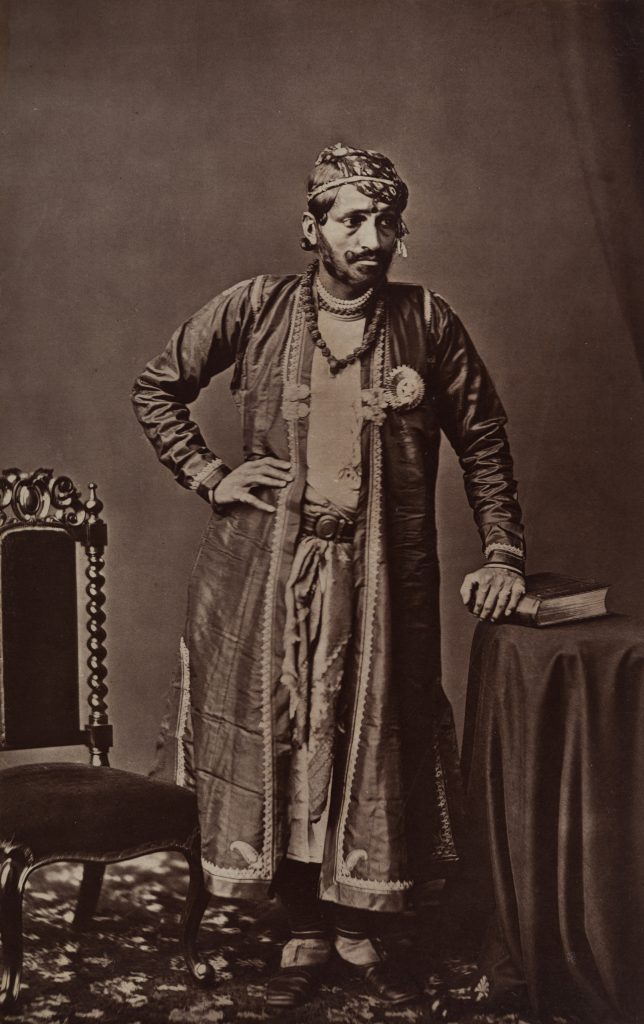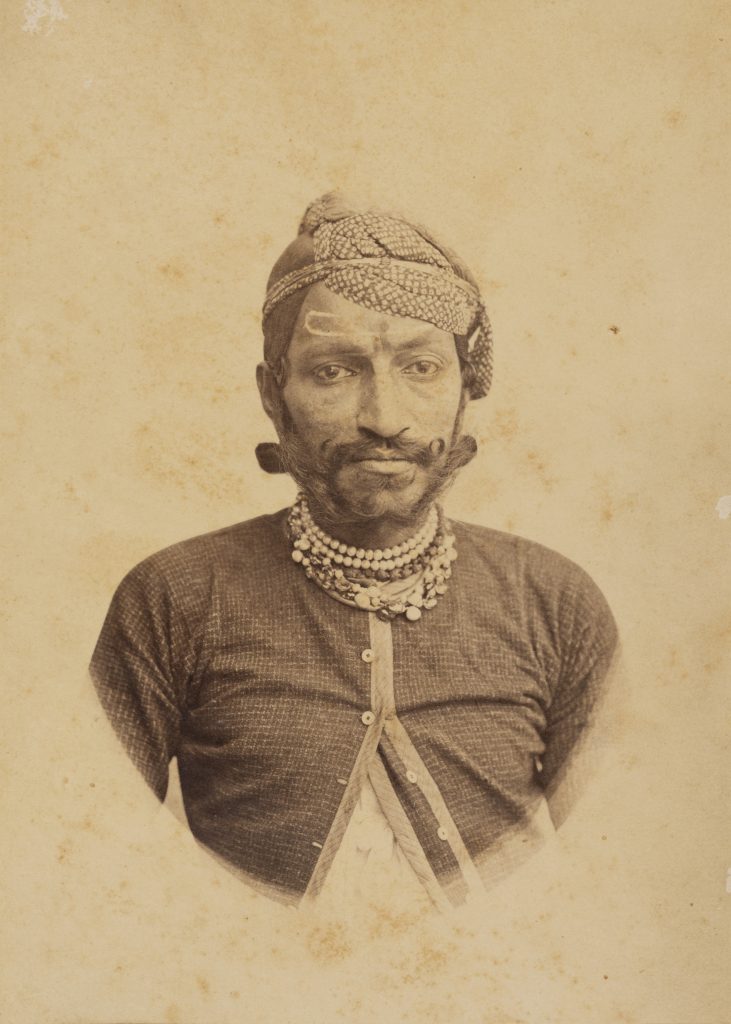Blogs
A Photographer Prince
Prof. BN Goswamy
An intimate look at the private world of Sawai Ram Singh II, at the centre of which seems to have stood the photukhana (photography atelier).
Saturday, 1 January, 1870. At 11 o’clock photographed the Duke of Edinburgh (and) then returned home.”
“Wednesday, 16 February. Went into the photography room. Printed photographs.”
“Tuesday, 29 March: Jaipur; took photographs from the corner of the palace.”
“Tuesday, 12 April: Jaipur; Did some photography related work. The (photography) chemical compound mixture (which had got) spoiled had to be fixed.”
“Friday, 3 June: Jaipur; Took some pictures in the aatish (stables) some of which did not turn out; then in the photography department, took 3 photos of the zenana out of which one was spoilt.”
If one did not know any better, the above scattered notes one would have thought came from a professional photographer’s carefully kept diary. They are, in fact, excerpts from a kind of roznamcha-journal that a Maharaja kept: Sawai Ram Singh II of Jaipur (ruled 1835 to 1880). If one were to relate this to the figures that Mrinalini Venkateswaran, who has been documenting the royal collection of photographs at Jaipur, gives — 6,050 individual photographs, contained in 105 albums and some loose prints, and 1941 glass plate negatives containing 2008 images — one knows that photography was a royal passion at the Jaipur court. And, deservedly, Sawai Ram Singh, apart from being a reformist and forward-looking ruler, carries the reputation of having been a ‘Photographer Prince.’ He ruled with as much flair over his princely state as over the small ‘retreat’ that came to be called his photukhana at Jaipur.

H. H. Maharaja of Jaipur Ram Singh, G.C.S.I. by Bourne & Shepherd, 1877, Woodburytype, H. 19.1 cm, W. 12 cm, Jaipur, Rajasthan, India, PHY.02471

Portrait of Sawai Ram Singh Ji II (1833-1880), Maharaja of Jaipur (1835-1880), c. 1860, Sawai Ram Singh II, Maharaja of Jaipur, Albumen print, 21 x 15 cm (folio size), PHY.12341
No one knows exactly when the Maharaja first got to know the exciting new device called the camera: there is a suggestion that it was in 1864 when the photographer T. Murray came to Jaipur; at the same time, there are surmises that it was as early as the 1850s. But whatever the date, the Maharaja embraced photography from the heart. He acquainted himself with the best available equipment and acquired it, learnt how to photograph, took his camera/s with him on his journeys — whether to Calcutta or Benares or Agra — and began to create what one could term an archive of whatever was around him in Jaipur itself: portraits of people, whether local nobility or distinguished visitors; views of the city taken from carefully chosen angles; landscapes; photographs of himself; also, intriguingly, a record of the women of the royal household. When western visitors came to Jaipur, the Maharaja was keen to learn from them all that they knew about photography; whenever he travelled himself, he wanted to record people and places: the Maan Mandir at Benares, the Taj of course at Agra, the Garh Palace of Bundi, the ruins of the Residency at Lucknow, and so on. Well-established photographers or photographic firms — among them T. Murray, Bourne & Shepherd, Sache, Lala Deen Dayal — came to visit Jaipur and take photographs. In the image above from the Museum of Art & Photography’s (MAP) collection, a portrait photographed by Bourne & Shepherd, we see the Maharaja dressed in his fineries leaning on a table and looking away from the camera, following photography and portraiture norms of the West. His own self-portraits, as seen in the other image from MAP’s collection, stand in sharp contrast, with him looking right into the camera and at the viewer, which creates a much more intimate likeness of the subject.
When the French writer and traveller, Louis Rousselet — that “prince of the darkroom” — came visiting in 1866, he sat down with the Maharaja and, as he notes, “The conversation then turned on photography (he is not only an admirer of this art, but is himself a skilful photographer), and afterwards on France, of which we talked a long time.” One does not know whether Rousselet got to see the impressive array of cameras and processing equipment that the Maharaja had acquired, but clearly, as can be seen in the royal collection at Jaipur, the most technologically advanced pieces were there: a chemical sensitising box that came from G. Knight & Sons, a big portrait lens by Voigtlander & Sohn, a wet-plate sliding box camera made by J. Spencer, a stereo box camera from H. Dallmeyer. The Maharaja evidently took pride in his collection, whether of equipment or photographs, and when he mounted his photographs on cards, he would put his personal seal on the card using a specially made embossing tool.

Portrait of a Courtesan, c. 1860, Sawai Ram Singh II, Maharaja of Jaipur, Albumen print, 21 x 15 cm (folio size), PHY.12341-15
There are a myriad aspects to photography and the Maharaja’s passion for it that Mrinalini, to whose efforts at researching the Jaipur archives one owes a lot, draws attention to in her studies. But among the more absorbing of these is the manner in which the Maharaja documented the women of the royal household — the zenana as it was called — mostly pardayats or concubines, some others who were housemaids and performers. It is a whole series of photographs, some of them of outstanding quality, unlike any that one sees from other courts of those times. The Maharaja seems to have been obsessively drawn to them. The women, as seen in the photographs from MAP’s collection, are seated, looking straight at the camera and the photographer, which is unusual for female portraiture at the time. For one, the women of the zenana, especially the concubines, were not allowed to be seen in public and hence photographed. However, given that the photographer was the Maharaja himself, the women perhaps felt free to look directly into the camera and not turn their gaze away in reservation. Of great interest in this context is a passage that the English artist Val Prinsep, who kept visiting Jaipur, wrote:
“We (the Rajah and 1) became great friends, Among the curiosities of Rajput Courts are the nautch girls, who are a kind of privileged people, and wander through the palaces unveiled and unmolested. I had noticed a number of them here, and, presuming on my intimacy, got the Rajah to order one of the girls, whose photograph (taken by the Rajah?) I saw, to sit. On Tuesday, then, I had a sitting from her. She is not young, but has a remarkably fine head …She wears a long flowing robe and winds her drapery around her with the air of a queen … Ram Sukee, this nautch girl, is a great friend of the Rajah, and soon he came to see how I was getting on, and pottered around me, arranging drapery and fancying he was of great assistance ….”
Here we have it, once again: an intimate look at the private world of Sawai Ram Singh II, at the centre of which seems to have stood the photukhana of that ‘Photographer Prince.’
The essay was originally published in The Tribune, Chandigarh and it is being reproduced here with the permission of Prof. BN Goswamy and The Tribune. This has now been adapted to feature artworks from MAP’s collection, and is thus slightly modified. The part that is added to the essay is in italics (to make it relevant to the images from MAP).
Prof. BN Goswamy is an Indian art historian and critic, best known for his scholarship on Indian miniature paintings, particularly Pahari painting, and is the author of over twenty books on arts and culture.








